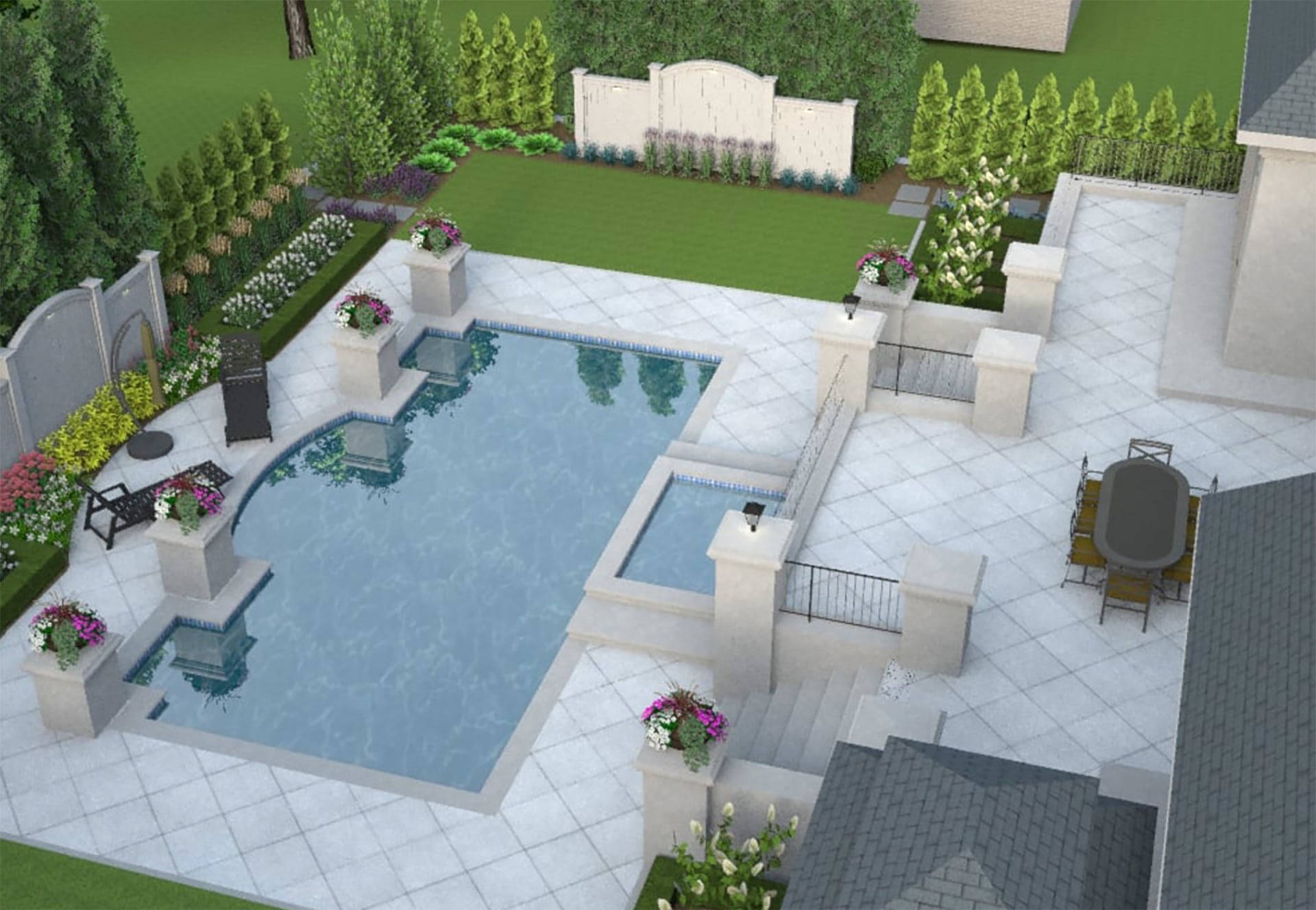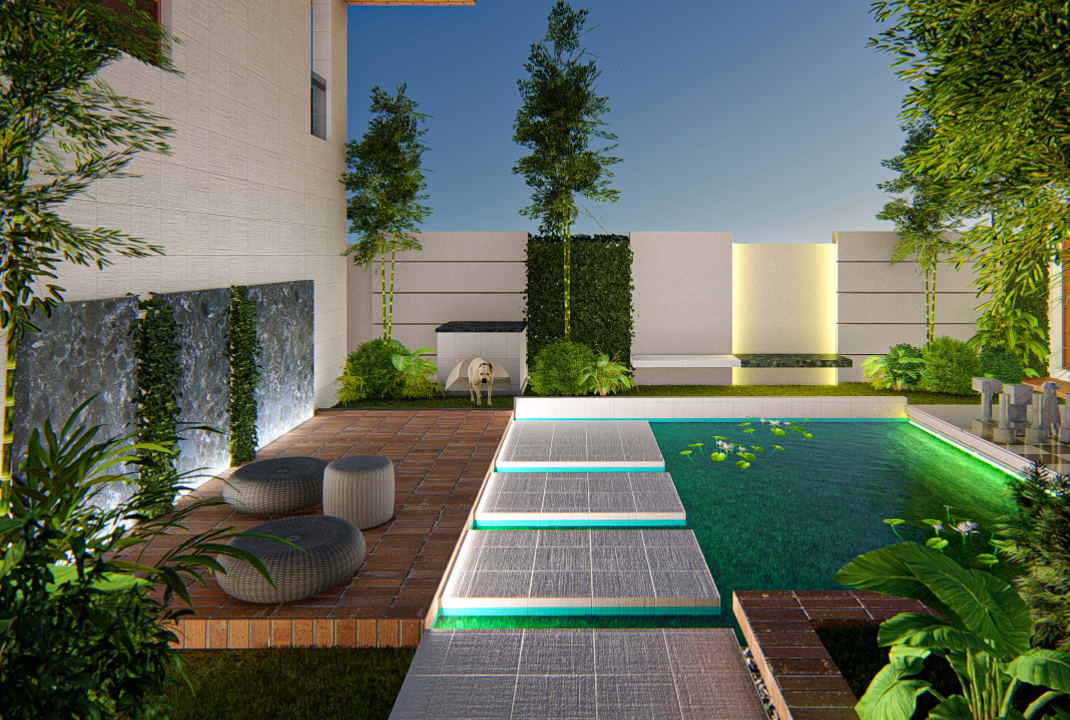No matter what type of landscape design you’re looking for, color is an important element to consider. The right colors can help to create the mood and atmosphere you want for your space, while the wrong colors can make it feel uninviting or even sterile. If you’re thinking about incorporating color into your landscape design, there are a few things to keep in mind. In this blog post, we’ll share some tips on how to use color in your landscape design renderings to create the perfect look for your home or business.
What is landscape design?
Landscape design is the process of creating a plan for the development and planting of gardens, parks, and other green spaces. It involves both the art and science of designing outdoor spaces to meet the needs of the people who will use them. Landscape designers work with a variety of clients, from homeowners to businesses, to create functional and beautiful landscapes that meet the specific needs of each client.
The first step in landscape design is to assess the site and develop a plan. The designer must take into account the existing features of the site, such as topography, climate, soil type, and hydrology. They must also consider the needs of the client, including how the space will be used and what kind of maintenance will be required. Once these factors have been considered, the designer can begin to develop a concept for the space.

After the concept has been developed, it is time to start working on the details. The designer must create a detailed planting plan that takes into account sun exposure, water requirements, and soil type. They must also select appropriate plants for the climate and site conditions. In addition to selecting plants, landscape designers also specify hardscape elements such as paving materials, retaining walls, steps, and benches.
Once all of the elements have been selected, it is time to create a color rendering of the landscape design. This step helps visualized how all of the elements will work together to create a cohesive space. The color rendering can be done by hand
The different types of landscape design
When it comes to landscape design, there are many different approaches that can be taken. The type of landscape design that is right for a particular space will depend on the specific needs and goals of that space. Here are some of the most common types of landscape design:
- Formal Landscape Design: Formal landscape design is characterized by clean lines, symmetrical elements, and a sense of order. This type of design is often seen in public spaces such as parks and gardens.
- Informal Landscape Design: In contrast to formal landscape design, informal landscape design features naturalistic elements and a more relaxed overall feel. This type of design is often seen in private residential spaces.
- Native Landscape Design: Native landscape design focuses on using plants that are indigenous to the local area. This type of design can help to create a sense of place and can be beneficial for the environment.
- Sustainable Landscape Design: Sustainable landscape design takes into account the long-term environmental impact of a space. This type of design often incorporates native plants, rainwater harvesting, and other sustainable practices.
- Xeriscape Landscape Design: Xeriscape landscape design is focused on minimizing water usage in a space. This type of design typically uses drought-tolerant plants and mulch to reduce evaporation.

The benefits of landscape design
When it comes to landscape design, color rendering is an important aspect to consider. This is because the right colors can help to set the mood and atmosphere of your outdoor space. They can also make a big difference in how your landscape looks and feels.
There are a few benefits that come with using color rendering in landscape design. For one, it can help you to create a more cohesive design. This is because you’ll be able to better coordinate the different elements of your landscape when you have a color palette in mind. Additionally, color rendering can also help to highlight certain features of your landscape that you want to draw attention to.
Another benefit of using color rendering in landscape design is that it can help to create a more realistic image of what your finished product will look like. This is especially helpful if you’re working with a client who needs to visualize the space before making any decisions. By creating a color rendering, you’ll be able to give them a better idea of what the final outcome will be.
If you’re thinking about incorporating color rendering into your next landscape design project, keep these benefits in mind. It’s an effective way to create a more unified design and it can alsohelp you provide your clients with a more realistic idea of what the final product will look like.

The best time to render your landscape design
If you’re planning to render your landscape design, the best time to do so is in the late afternoon or early evening. This is when the natural light is at its warmest and most flattering, and it will help your colors pop. Plus, you’ll be able to see how the shadows fall and how the light hits different surfaces. So take advantage of the golden hour and render away!
How to choose the right colors for your landscape design?
When it comes to landscape design, color is one of the most important aspects to consider. The right colors can make all the difference in the overall look and feel of your design. But with so many different colors to choose from, how do you know which ones are right for your landscape design?
Here are a few tips to help you choose the right colors for your landscape design:
- Consider the overall look you want to achieve. Do you want a calm and serene space or something that’s more vibrant and exciting? The colors you choose should be based on the overall look and feel you want to achieve.
- Take into account the existing colors in your landscape. If you have existing plants or features in your landscape, you’ll want to take their colors into account when choosing new colors for your design. You don’t want everything to clash!
- Use color theory to help you create a harmonious color scheme. Color theory can be a helpful tool when choosing colors for your landscape design. by using complementary, analogous, or monochromatic color schemes, you can create a cohesive look that’s pleasing to the eye.
- Don’t be afraid to experiment! There’s no need to be afraid of trying out new color combinations in your landscape design. Sometimes the best way to find the right colors is through trial and error. So go ahead and experiment until you find a combination that you love!
Tips for creating a beautiful landscape design
When it comes to landscape design, color is one of the most important aspects to consider. The right colors can make all the difference in creating a beautiful and inviting space. Here are some tips for choosing the best colors for your landscape design:
- Consider the overall mood you want to create. Do you want a calm and relaxing space, or something more energetic? The colors you choose should reflect the mood you want to achieve.
- Use contrast to create interest. Pairing contrasting colors will help to create visual interest and depth in your landscape design.
- Use light and dark colors together. Using light and dark colors together can also help create depth and interest in your design.
- Go bold! Don’t be afraid to use bold, bright colors in your landscape design. A little bit of color can go a long way in adding personality to your space.
- Consider seasonal changes. Depending on the climate you live in, the colors you choose for your landscape should change with the seasons. For example, warmer tones might be appropriate for spring and summer, while cooler tones might be better for fall and winter.

Conclusion
A landscape design color rendering can be a great way to see how your landscaping will look before you actually plant anything. This type of rendering can help you choose the right plants and colors for your space, and it can also give you an idea of how the finished product will look. If you’re thinking about hiring a landscape designer, be sure to ask if they offer color renderings as part of their services.





